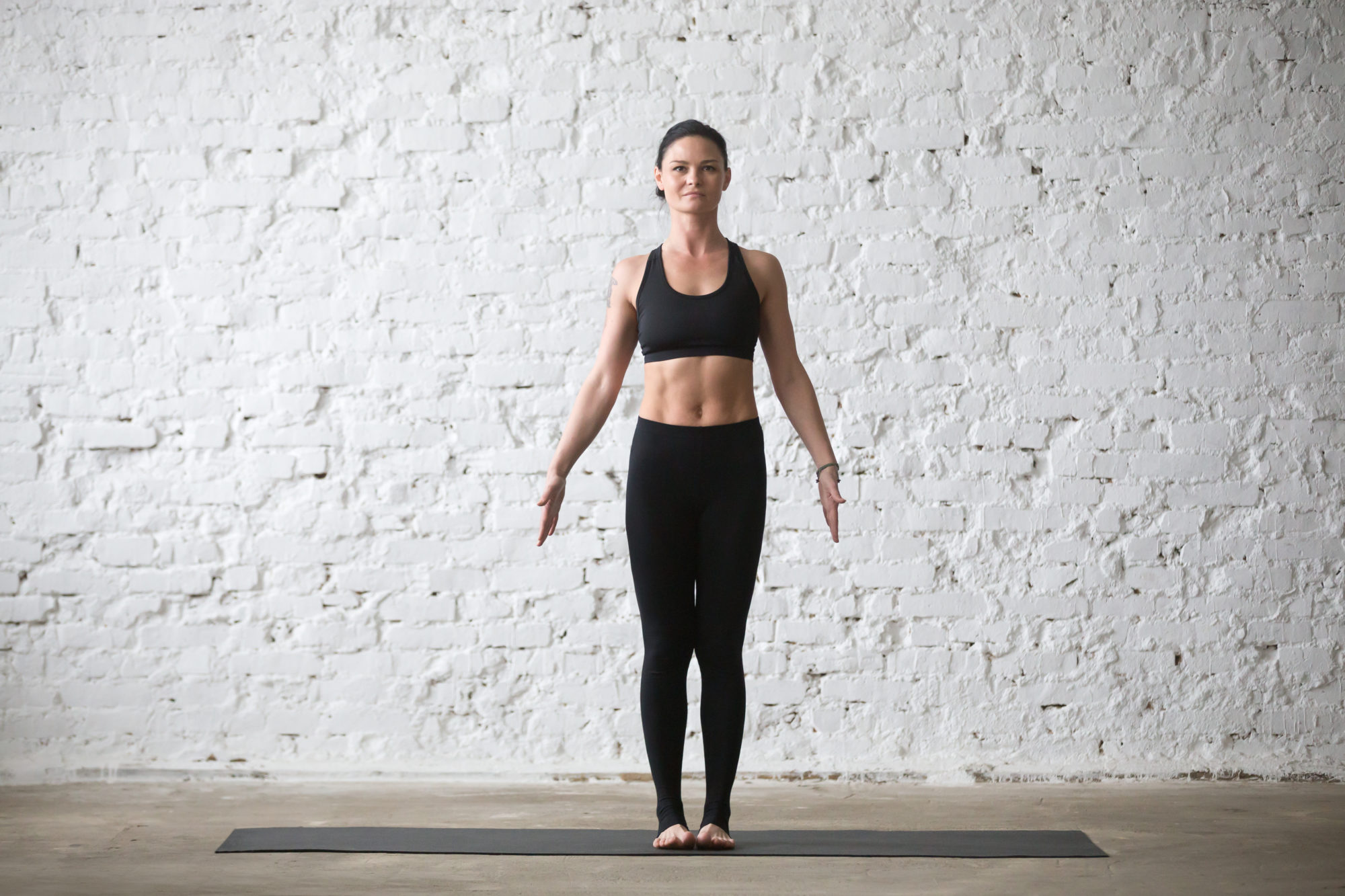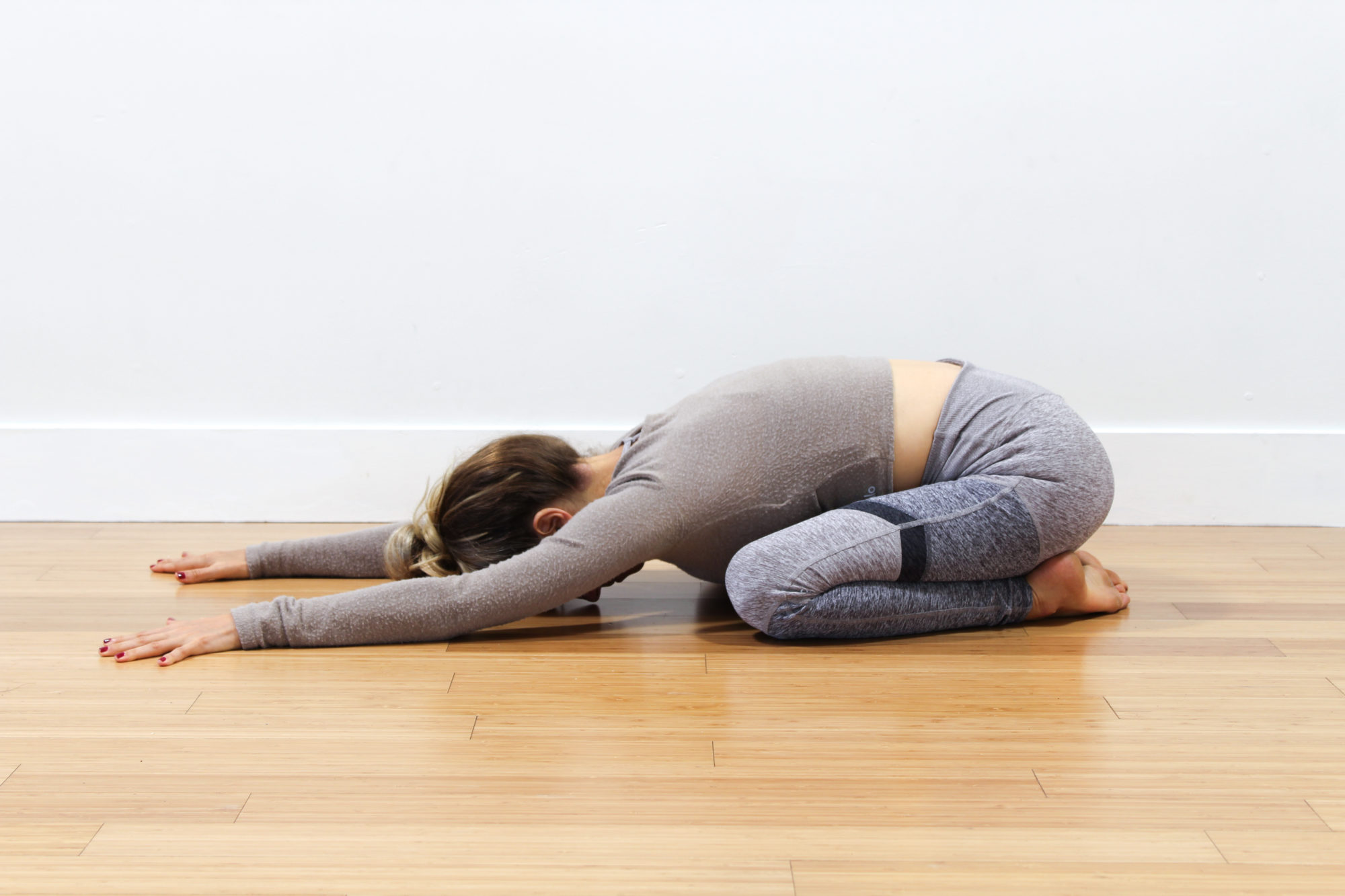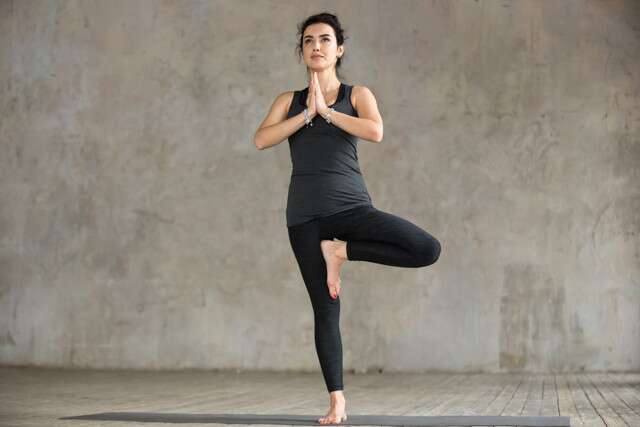We Explore Benefits of Yoga for Health
How Does Yoga Benefit Physical Health?
Yoga is a holistic practice that offers a wide range of physical health benefits. Whether you’re a seasoned yogi or just starting out, integrating yoga into your routine can positively impact your body in various ways. In this article, we’ll explore how yoga benefits physical health.
1. Improved Flexibility
Yoga is renowned for enhancing flexibility. Through a series of stretches and poses, it gradually increases the length of muscles and the range of motion in joints. This can be particularly helpful for people with stiff muscles or those who sit at a desk for long hours.
2. Enhanced Strength
Yoga isn’t just about flexibility; it also promotes strength. Many yoga poses require you to support your body weight, which builds muscle strength, especially in the core, arms, legs, and back.
3. Better Posture
Yoga emphasizes body awareness and alignment. This focus on proper posture can help alleviate and prevent issues associated with poor posture, such as back, neck, and shoulder pain.
4. Enhanced Joint Health
Yoga encourages the full range of motion in joints. This can help maintain joint health, reduce the risk of arthritis, and prevent degenerative joint conditions.
5. Improved Circulation
Yoga incorporates deep breathing exercises that enhance blood circulation. Better circulation means improved oxygen delivery to cells and overall cardiovascular health.
6. Weight Management
Certain styles of yoga, such as power yoga or vinyasa, can be physically demanding and aid in weight loss and weight management by burning calories and building lean muscle mass.
7. Digestive Health
Yoga’s twisting and bending poses stimulate digestive organs, potentially improving digestion and reducing issues like bloating and constipation.
8. Immune System Support
Some studies suggest that regular yoga practice can boost immune system functioning, making you more resistant to illnesses.
9. Stress Reduction
Yoga is renowned for its ability to reduce stress. By lowering cortisol levels and promoting relaxation, it helps reduce the physical toll of chronic stress on the body.
10. Better Sleep
Regular yoga practice can improve sleep quality. It is often recommended for individuals suffering from insomnia or sleep disturbances.
In conclusion, yoga’s physical health benefits are extensive and diverse. Whether you’re looking to improve flexibility, build strength, alleviate pain, or enhance overall well-being, yoga has something to offer. Integrating yoga into your daily routine, even for just a few minutes a day, can have a profound impact on your physical health and overall quality of life. So, roll out your yoga mat and start reaping the rewards of this ancient practice.
Can Yoga Improve Mental Well-Being?
Yoga is renowned not only for its physical benefits but also for its remarkable impact on mental well-being. In this article, we’ll delve into how practicing yoga can improve your mental health and overall sense of well-being.
1. Stress Reduction
One of the most well-known benefits of yoga is its ability to reduce stress. Yoga emphasizes controlled breathing and mindfulness, both of which help calm the nervous system. Through practices like deep breathing (pranayama) and meditation, yoga helps lower cortisol levels, the body’s primary stress hormone. This reduction in stress can lead to improved mental clarity and a greater sense of ease.
2. Anxiety Management
Yoga provides effective tools for managing anxiety. The combination of physical postures and relaxation techniques can help individuals with anxiety disorders by promoting relaxation and reducing the frequency and severity of panic attacks.
3. Enhanced Emotional Regulation
Yoga encourages self-awareness and emotional regulation. By practicing mindfulness and being present in the moment, you can become more attuned to your emotions and better equipped to manage them constructively.
4. Improved Mood
Yoga has been shown to boost mood and increase feelings of happiness. This is partly due to the release of endorphins during physical activity and the sense of accomplishment that comes with mastering yoga poses.
5. Enhanced Focus and Concentration
The mental discipline required in yoga practice helps improve concentration and focus. This can be particularly beneficial for students, professionals, and anyone seeking to enhance their cognitive abilities.
These points underscore the significant role yoga plays in promoting mental well-being by addressing stress, anxiety, emotional regulation, mood, and cognitive function. Incorporating yoga into one’s routine can be a valuable strategy for achieving and maintaining good mental health.
Does Yoga Help With Stress Management?
Stress has become an almost ubiquitous part of modern life. Whether it’s due to work, family, or other obligations, it’s not uncommon for people to feel overwhelmed and mentally drained. Fortunately, there’s a natural and time-tested way to combat stress and its adverse effects on our mental and physical health: yoga.
1. Stress Reduction Through Deep Relaxation
At the heart of yoga’s effectiveness in stress management lies its ability to induce a state of deep relaxation. Through a combination of controlled breathing exercises and meditation, yoga triggers the body’s relaxation response. This physiological shift includes a decrease in the production of stress hormones, such as cortisol, and a corresponding increase in feel-good neurotransmitters like serotonin. The result? A profound sense of calm and tranquility.
2. Physical Tension Release
When we’re stressed, our bodies often respond by tensing up. Muscles become tight, leading to discomfort and sometimes pain. Yoga’s physical postures, known as asanas, offer a gentle way to release this physical tension. Through a series of stretches and relaxation techniques, yoga helps loosen and relax tight muscles, providing relief from the physical symptoms of stress.
3. Mindfulness and the Present Moment
Yoga emphasizes mindfulness, which is the practice of paying full attention to the present moment without judgment. This powerful mental shift enables individuals to become more aware of their thoughts, emotions, and bodily sensations. By being present, individuals can gain greater control over their reactions to stressors. Instead of reacting impulsively, they learn to respond thoughtfully, reducing stress and anxiety.
4. Emotional Regulation
Regular yoga practice can improve emotional regulation. By teaching individuals to acknowledge and accept their emotions without judgment, yoga helps them process their feelings in a healthier and more constructive way. This can lead to a greater sense of emotional stability and resilience in the face of life’s challenges.
5. Improved Sleep Quality
Stress often disrupts sleep patterns, leading to insomnia and poor sleep quality. Yoga’s relaxation techniques and stress-reducing benefits can promote better sleep. By calming the mind and relaxing the body, yoga helps individuals achieve a more restful and rejuvenating sleep, enabling them to wake up feeling refreshed and better equipped to handle daily stressors.
yoga is a powerful and natural means of stress management. Its ability to induce relaxation, release physical tension, enhance mindfulness, regulate emotions, improve sleep quality, and build resilience makes it an invaluable tool for combating stress in our hectic lives. Incorporating yoga into your routine, even for just a few minutes a day, can lead to profound improvements in your mental and physical well-being. So, unroll your yoga mat and take a step towards a stress-free, balanced life.
Can Yoga Help With Specific Health Conditions?
Yes, yoga can be beneficial for managing and even improving specific health conditions. While it is not a replacement for medical treatment, it can be used as a complementary therapy to alleviate symptoms and enhance overall well-being. Here are some health conditions for which yoga has been found to offer benefits:
1. Chronic Pain Management: Yoga can help alleviate chronic pain conditions such as lower back pain, arthritis, fibromyalgia, and migraines. The gentle stretching and strengthening exercises in yoga can reduce pain and improve flexibility.
2. Cardiovascular Health: Yoga, particularly styles that include aerobic components like vinyasa or power yoga, can improve cardiovascular health. It may help lower blood pressure, reduce cholesterol levels, and enhance overall heart function.
3. Anxiety and Depression: Yoga’s emphasis on mindfulness and deep breathing can be valuable for managing anxiety and depression. Regular practice can promote relaxation, reduce symptoms, and improve mood.
4. Stress Reduction: Yoga is well-known for its stress-reducing benefits. It helps activate the body’s relaxation response, reducing the production of stress hormones like cortisol and promoting a sense of calm.
5. Insomnia and Sleep Disorders: The relaxation techniques in yoga can improve sleep quality and help individuals suffering from insomnia or other sleep disorders.
6. Respiratory Conditions: Yoga’s focus on breath control can be beneficial for individuals with respiratory conditions like asthma or chronic obstructive pulmonary disease (COPD). It improves lung function and respiratory efficiency.
7. Diabetes Management: Some studies suggest that yoga can help individuals with diabetes by promoting weight management, improving insulin sensitivity, and reducing stress.
8. Autoimmune Disorders: While not a cure, yoga can help individuals with autoimmune disorders like rheumatoid arthritis or lupus by reducing inflammation and providing pain relief.
9. Digestive Disorders: Certain yoga poses and breathing exercises can stimulate digestion and alleviate symptoms of digestive disorders such as irritable bowel syndrome (IBS) or indigestion.
10. Post-Traumatic Stress Disorder (PTSD): Yoga is used in trauma therapy to help individuals with PTSD manage symptoms, reduce hyperarousal, and improve overall mental health.
It’s important to note that the effects of yoga on specific health conditions can vary from person to person. Before starting any yoga practice for a health condition, it’s advisable to consult with a healthcare professional or a qualified yoga instructor with expertise in therapeutic yoga. They can provide guidance on appropriate poses and practices tailored to your individual needs and limitations.
10 Best Yoga Exercises for Good Health
Yoga is a versatile practice that offers a wide range of exercises and poses to promote good health. The best yoga exercises for good health can vary depending on your specific goals and needs, but here are some foundational yoga poses and exercises that are generally beneficial for overall health and well-being:
1. Tadasana (Mountain Pose): This simple standing pose helps improve posture, balance, and concentration. It’s an excellent starting point for many yoga sequences.

2. Surya Namaskar (Sun Salutation): A dynamic sequence of poses that stretches and strengthens the entire body. It’s a great way to warm up and energize yourself.

3. Balasana (Child’s Pose): This resting pose helps relieve stress and tension by gently stretching the back, shoulders, and hips. It’s often used as a relaxation pose between more active poses.

4. Uttanasana (Forward Bend): This pose stretches the hamstrings, calms the mind, and can relieve tension in the neck and back.

5. Dhanurasana (Bow Pose): A backbend that stretches the front of the body, strengthens the back muscles, and stimulates the organs in the abdomen.

6. Bhujangasana (Cobra Pose): Strengthens the spine, opens the chest, and can alleviate back pain. It’s also known for its ability to improve digestion.

7. Dhanurasana (Bow Pose): A backbend that stretches the front of the body, strengthens the back muscles, and stimulates the organs in the abdomen.

8. Trikonasana (Triangle Pose): A standing pose that stretches the legs, opens the hips, and strengthens the core. It’s excellent for improving balance and alignment.

9. Vrikshasana (Tree Pose): A balancing pose that helps improve concentration and stability while strengthening the legs and core.

10. Shavasana (Corpse Pose): A relaxation pose often used at the end of a yoga practice to promote deep relaxation, reduce stress, and integrate the benefits of your practice.

These are just a few examples of yoga exercises and poses that can contribute to good health. A well-rounded yoga practice often includes a combination of stretching, strengthening, balancing, and relaxation poses to promote physical and mental well-being. It’s essential to practice yoga mindfully and consult with a qualified yoga instructor, especially if you’re new to yoga or have specific health concerns or limitations. They can help tailor a practice that suits your needs and goals.
The Key Components of a Yoga Based Healthy Lifestyle?
A yoga-based healthy lifestyle encompasses more than just physical postures. It promotes a holistic approach to well-being that incorporates the body, mind, and spirit. Here are the key components of a yoga-based healthy lifestyle:
1. Asana (Physical Postures): Yoga poses or asanas are a fundamental component. They help improve flexibility, strength, and balance while enhancing physical health. A regular practice of asanas can promote overall body awareness.
2. Pranayama (Breath Control): Pranayama involves breath control techniques. Learning to breathe mindfully can reduce stress, increase energy levels, and improve respiratory health. It’s a crucial aspect of yoga practice.
3. Meditation: Meditation is the practice of training the mind to focus, quieting mental chatter, and promoting mental clarity and emotional balance. Regular meditation can reduce anxiety, improve concentration, and enhance overall mental well-being.
4. Mindfulness: Yoga encourages living in the present moment. Practicing mindfulness helps you stay aware of your thoughts and emotions, leading to better stress management and emotional regulation.
5. Yamas and Niyamas: These are ethical and moral guidelines in yoga philosophy. Yamas focus on social ethics (e.g., non-violence, truthfulness), while Niyamas emphasize personal ethics (e.g., cleanliness, self-discipline). Following these principles fosters positive relationships and inner growth.
6. Healthy Eating: Yoga promotes mindful eating, emphasizing the importance of consuming a balanced and nourishing diet. A diet rich in whole foods, fruits, vegetables, and hydration supports physical and mental well-being.
7. Self-Care: Self-care practices, such as adequate rest, relaxation, and self-compassion, are essential for maintaining physical and emotional health. Yoga encourages self-care as a means of nurturing the body and mind.
8. Sustainability: Many yogis embrace eco-conscious living as a way to honor the environment and practice ahimsa (non-violence). Sustainability practices align with yoga’s holistic approach to well-being.
9. Self-Reflection: Self-awareness and self-reflection are essential aspects of yoga. Taking time to reflect on your thoughts, actions, and intentions can lead to personal growth and greater self-understanding.
10. Stress Management: Yoga equips individuals with tools to manage stress effectively. This includes techniques like progressive relaxation, deep breathing, and yoga nidra (guided relaxation).
Remember that a yoga-based healthy lifestyle is highly individual and can be adapted to meet your unique needs and goals. It’s about cultivating balance, harmony, and well-being in all areas of life.
How Can Beginners Start a Yoga Practice for Better Health?
Starting a yoga practice as a beginner is a fantastic way to improve your overall health. Here’s a step-by-step guide to help you get started:
1. Set Clear Intentions: Begin by clarifying why you want to practice yoga. Whether it’s for physical fitness, stress relief, flexibility, or overall well-being, understanding your motivations will help you stay committed.
2. Choose a Suitable Yoga Style: There are various yoga styles, each with its focus and intensity level. For beginners, Hatha yoga, Vinyasa, or gentle yoga classes are excellent choices. Research local studios or online classes that offer these styles.
3. Gather Essential Equipment: You don’t need much to start—just comfortable clothing that allows for movement and a non-slip yoga mat. Some props, like blocks and straps, can be helpful for certain poses but are not necessary for beginners.
4. Start with Beginner-Friendly Classes: Look for classes specifically designed for beginners. These classes typically cover the basics, introduce foundational poses, and provide guidance on alignment and breathing.
5. Practice Regularly: Consistency is key. Start with a realistic schedule that you can maintain, even if it’s just a few minutes each day. As you progress, you can gradually increase the duration and frequency of your practice.
6. Learn Basic Poses: Familiarize yourself with fundamental yoga poses. Begin with simple poses like Mountain Pose (Tadasana), Child’s Pose (Balasana), Downward-Facing Dog (Adho Mukha Svanasana), and Cobra Pose (Bhujangasana).
7. Focus on Breathing: Breath awareness is a central element of yoga. Learn to breathe deeply and mindfully. Practice pranayama exercises, such as diaphragmatic breathing or alternate nostril breathing, to enhance your breath control.
8. Listen to Your Body: Pay attention to how your body feels during practice. Never force yourself into a pose or push beyond your comfort level. Yoga should feel challenging but not painful.
9. Seek Proper Instruction: Consider taking classes from a qualified yoga instructor, either in-person or online. A skilled teacher can guide you through proper alignment and provide personalized guidance.
10. Practice Mindfulness: Yoga isn’t just about physical postures; it’s also about mental awareness. Practice mindfulness by being fully present during your yoga sessions, observing your thoughts and sensations without judgment.
11. Stay Patient and Persistent: Progress in yoga may be slow, especially in the beginning. Stay patient and persistent. Your flexibility, strength, and overall well-being will improve with time and regular practice.
12. Modify as Needed: Don’t hesitate to use props or modify poses to accommodate your body’s limitations. Yoga is adaptable to your individual needs, and modifications can make the practice more accessible.
13. Stay Hydrated and Eat Mindfully: Hydration and nutrition play a vital role in your overall health. Drink water before and after practice, and consider maintaining a balanced, healthy diet to support your yoga journey.
14. Rest and Recovery: Allow your body time to rest and recover between sessions. Restorative yoga and Savasana (Corpse Pose) are excellent for relaxation and recovery.
15. Celebrate Your Progress: Yoga is a personal journey. Celebrate your achievements, no matter how small they may seem. Each step forward is a testament to your commitment to better health.
Remember that yoga is a lifelong practice, and it’s normal to experience ups and downs along the way. The key is to maintain a positive attitude, stay consistent, and enjoy the journey toward improved health and well-being.
How Does Yoga Improved Mental Health?
Yoga can improve mental health in several ways, including:
1. Stress Reduction: By promoting relaxation and reducing the production of stress hormones like cortisol.
2. Mindfulness: Through mindfulness practices that increase awareness and help manage racing thoughts and emotions.
3. Emotional Regulation: By enhancing the ability to identify, acknowledge, and manage emotions in a healthy way.
4. Improved Mood: Through the release of endorphins during physical activity and the sense of accomplishment from mastering yoga poses.
5. Better Sleep: By promoting relaxation and reducing symptoms of insomnia or sleep disturbances.
6. Enhanced Focus and Concentration: By improving mental clarity and the ability to stay attentive in daily life.
7. Reduced Symptoms of Anxiety and Depression: With regular practice, yoga can alleviate symptoms and improve overall mood.
8. Coping with Trauma: Yoga practices can help individuals cope with the emotional aftermath of trauma and promote healing.
These mental health benefits make yoga a valuable tool for managing stress, anxiety, depression, and overall emotional well-being.
